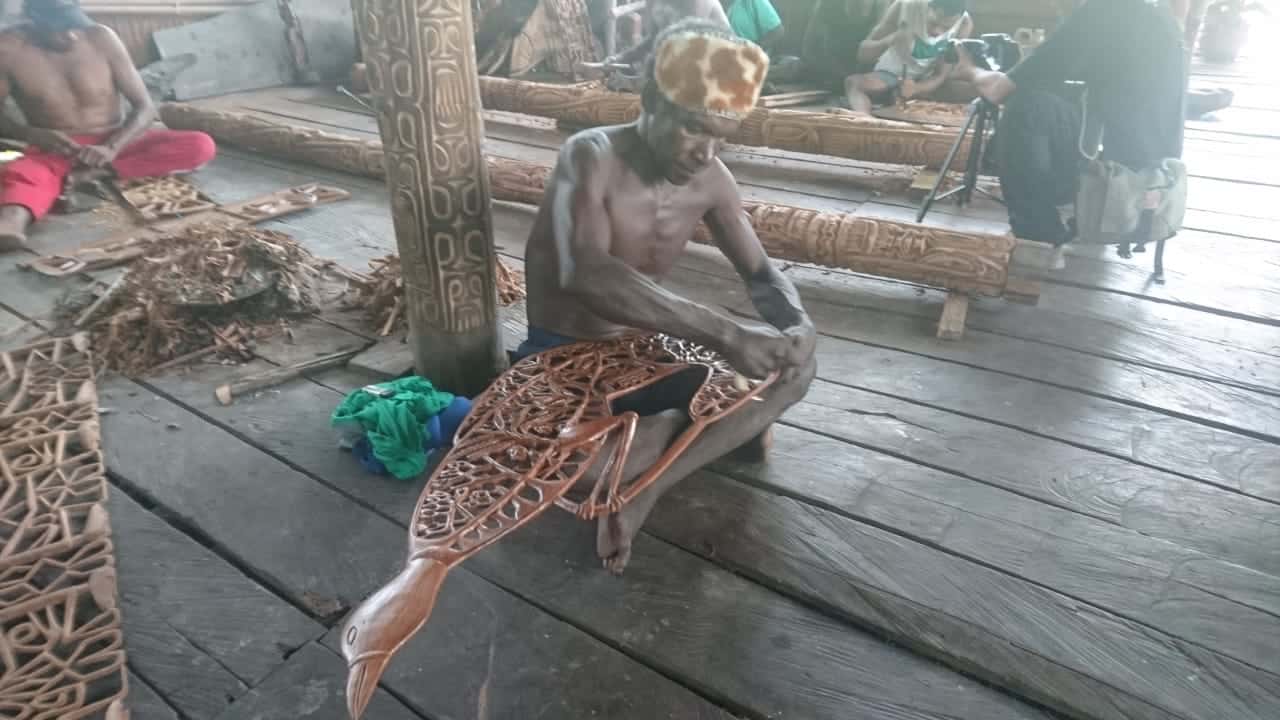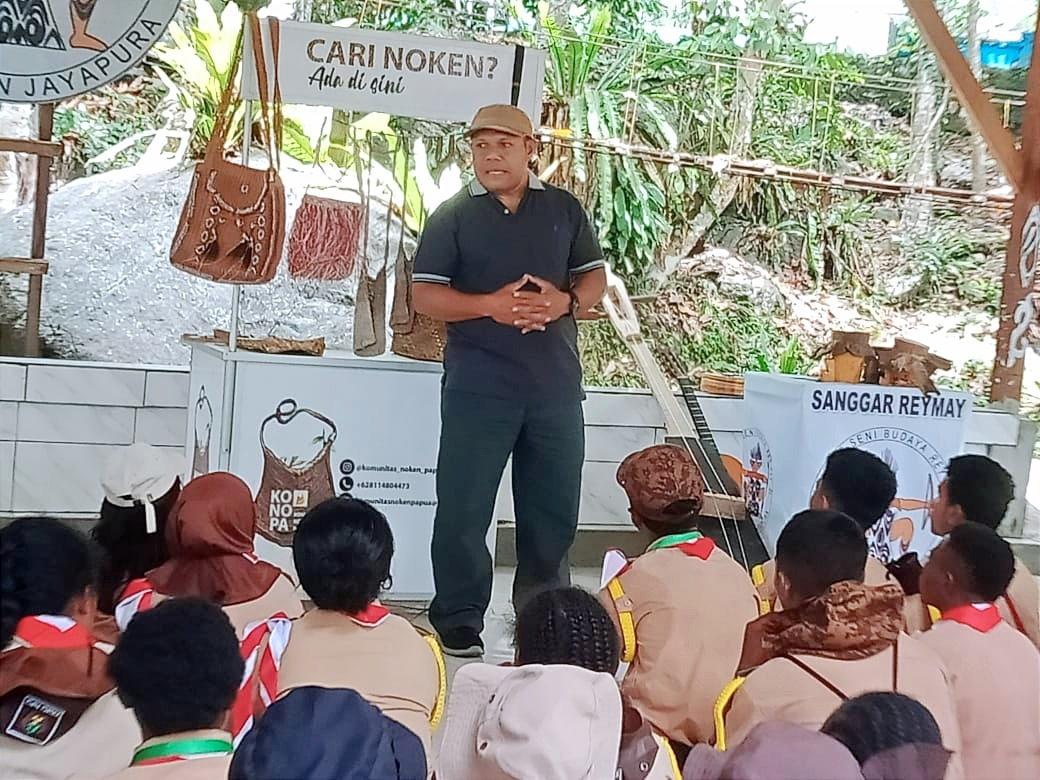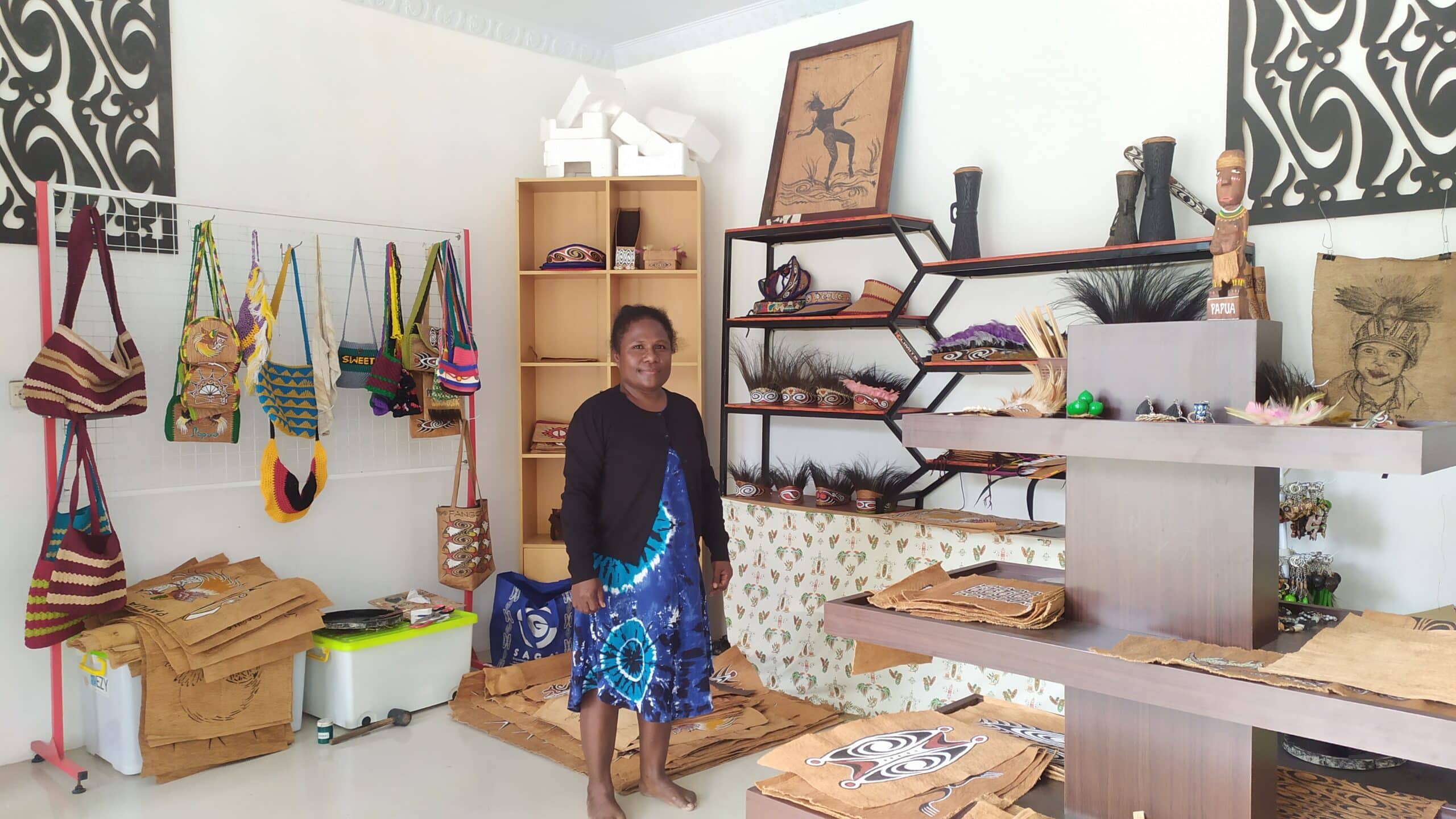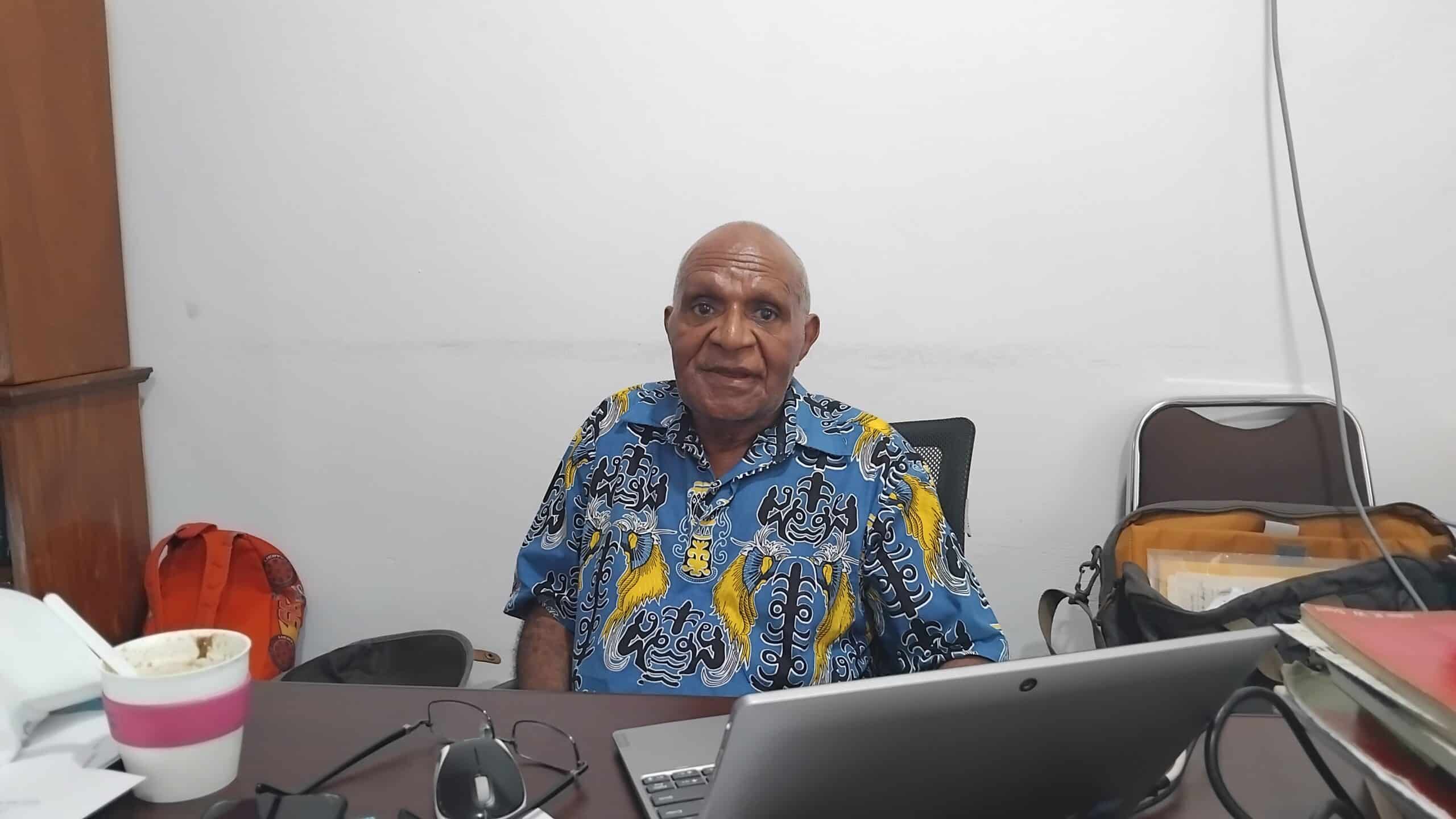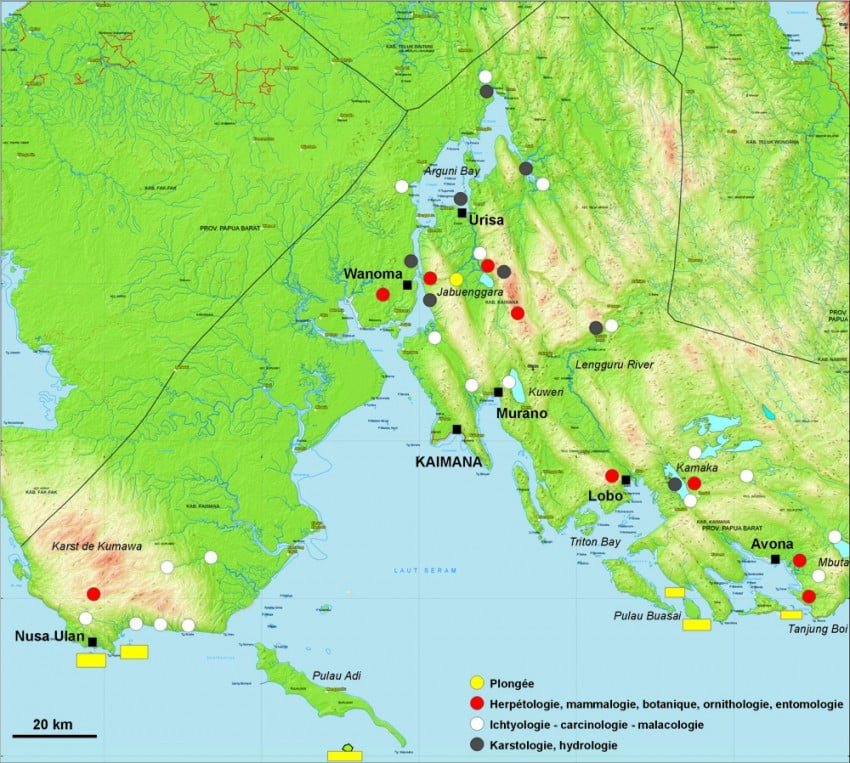Asmat, Jubi – Papua’s Asmat Regency is famous for its art, culture, and dignity of its people. The culture of the people there is very interesting. One thing that stands out when talking about Asmat is the carving of sculptures and panels that are very unique and artistic.
Asmat carving has its own characteristics. Neat artistry and intricate carving details make the carvings of this region so famous. The carving motifs usually relate to nature, living things, and daily life activities.
The artists make carving a medium to communicate with the ancestors. That’s why this activity is inseparable from their lives.
The uniqueness of Asmat carving can be seen in one of the carving studios in Atsy District, the Acakap Studio. The studio consists of 50 middle-aged men and was established in 2002.
When you stop by the studio, you can see up close how the wow ipits and wow iwir express their imagination on logs of wood and slats of boards. The carvers have a lot of fun playing with the chisel on their objects. Some perfect the carved sculptures and panels by rubbing them with various tools such as stones with a smooth surface and boar tusks.
Every carving in the studio is different. The diverse motifs used are generally inspired by nature and depict the lives of ancestors such as people rowing boats, gardening, animals, and so on.
Acakap Studio chairman Yohanis Tuanban said a carver at the studio can produce four to five carvings a month, such as porch posts, panels (wall hangings), and large statues.
“Small carvings such as ashtrays and small statues can be done in two to three days,” Tuanban said when Jubi visited last week.
Tuanban said they use local materials to make the carvings, such as ironwood and eucalyptus. The main materials are determined or chosen by the carvers themselves. They carve according to their ideas and inspiration.
“That is why the motifs and shapes of the carvings are different. The carvings are made spontaneously without sketching or conceptualizing the object to be carved first,” he said.
Tuanban said he took the initiative to establish the studio in 2002 to accommodate carvers in Atsy Village so that they could continue the tradition passed down from generation to generation.
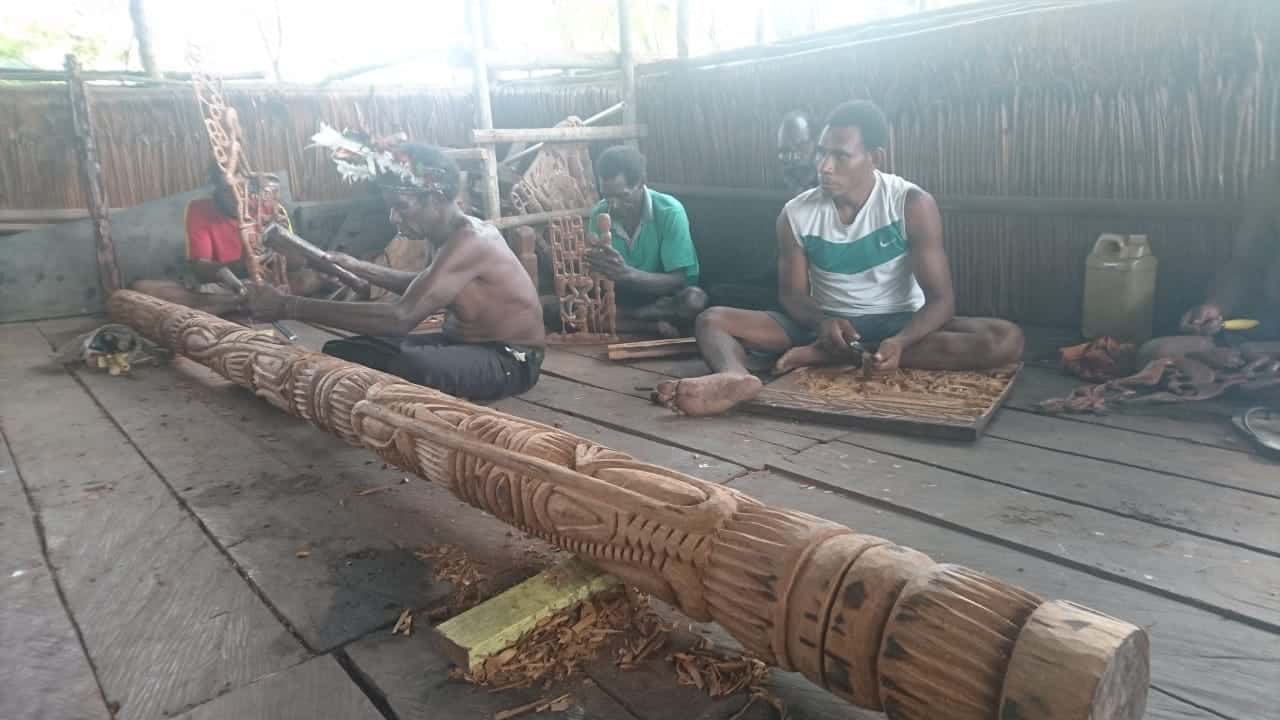
Marketing Constraints
One of the members of the Acakap Studio, Laurensius Bumereu, revealed that it was difficult to market carvings outside the Asmat region. So far, their work has only been marketed around Atsy District and Agats, the capital of Asmat Regency.
According to him, group members pursue carving activities in the studio every day. With their daily activities, many carvings are produced but they are not well marketed.
“We take the initiative to put our thoughts on wood every day to keep the studio alive. Occasional orders include ashtrays, panels, and small sculptures,” said Bumereu.
He hoped that the local government would help the carvers in Atsy to market their carvings outside Asmat. This way, they can provide for their families and send their children to school.
“So far, the local government has been quite helpful. But we want them to help us market our products,” he said.

The price of carvings varies depending on the motif, size, and bargaining position between buyer and seller. One carving is worth around Rp 200,000 to one mill.
“My children can go to school thanks to these carvings. That’s why we want the carvings to be marketed outside Atsy,” Bumereu said.
Meanwhile, Asmat Regent Elisa Kambu said the local government put considerable attention on cultural arts. One of which is by encouraging the Asmat cultural festivals annually.
“We do not promote the handicrafts of the Asmat people in Papua only, we do it outside the region as well, even to Europe,” said Kambu.
Asmat Regency, Kambu added, is very famous for its unique culture, carving art, and the dignity of its people. Many people want to go to Asmat to see the beauty of the region’s culture up close.
“That’s why during my leadership with Mr. Tom (vice-regent), we concentrated on building infrastructure and opening access to make it easier for people to come to Asmat, while also encouraging other sectors,” said Kambu. (*)



